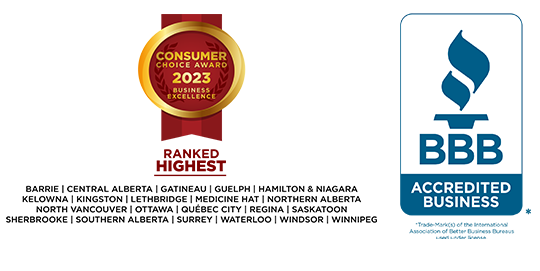How do I know if I have too much debt? Six signs that don’t lie
This question comes up a lot, but it’s a difficult one to answer. While everyone loves a good benchmark, there’s never a clear-cut answer for how much debt is too much for any individual.
There are, however, warning signs that debt is becoming unsustainable. Rather than a specific number though, these six signs are far more reflective of your financial situation, and whether it’s time to reach out for help.

1. You always carry a balance on your revolving credit accounts
Could you pay off your credit cards and lines of credit using the funds you currently have available in your chequing and savings accounts? If you answered no, you might be carrying too much debt.
Sure, you may be paying more than the minimum and your payments may be completely manageable in your current budget. But, what happens if you encounter an unexpected cost like a home or auto repair that you can’t afford with your savings alone?
Could you still afford your credit card or line of credit payments if the balance were to increase by $1,000 or $2,000?
2. You can only afford the minimum payment
Minimum payments cover only a small fraction (1 to 3 percent) of your debt’s principal value. Sometimes (as with many lines of credit) it only covers the interest.
Of course, paying the minimum is always better than no payment at all. But in most cases, it will cost you the equivalent of several years and several times the original purchase price to pay off your debt making only the minimum payments.
3. You can’t afford to save
The 50-30-20 budgeting rule says roughly half of your budget should go to essential expenses like groceries, rent, and utilities; a third to discretionary purchases like restaurants, shopping, and entertainment; and the rest to savings goals such as an emergency fund, retirement, and large purchases.
Any debt payments should comfortably fit within the 30 percent you’ve set aside for discretionary spending. If these are getting in the way of your ability to save, that’s a clear sign you have more debt than you can afford.
4. You’re using debt to pay for basic expenses
Nobody should ever be in a position where they’re paying interest just to stay alive. Yet, every day countless Canadians are increasing their debt burden on groceries, utilities, medications, and other basic living expenses.
This is different than using a credit card at the grocery store to earn points and paying it off at the end of the month — which is one of the most responsible ways to use credit. Rather its when these purchases are causing your debt level to increase month over month that you should begin to be concerned.
5. You frequently apply for new credit or credit limit increases
Lenders and credit bureaus would like you to use no more than 30 percent of your total available credit at any given time. Anything more suggests you need credit to make ends meet and may therefore be a lending risk.
Frequently applying for new credit or frequently requesting credit limit increases raises similar concerns — as the most likely reason for the request is you’re nearing (or expect to near) your limit.
If you find yourself getting anxious about nearing your credit limit and the potential consequences of not having money when you need it, recognize this as a sign you already have too much debt.
6. You use one form of credit to pay for another
This usually starts out innocently enough: Cash is a little short one month, and rather than take the risk of missing a payment you use your credit card to pay your auto loan. This increases the credit card bill the next month, so you use your line of credit to cover the difference. Instead of being a one-time exception, using credit to pay for credit has become a regular and seemingly inescapable cycle.
Unlike the other warning signs above this isn’t just a sign you’ve taken on more debt than you can manage, but that insolvency is imminent if not already your reality.
What to do next
The good news is that every debt problem has a solution. If you notice any of the warning signs above, contact your local MNP Licensed Insolvency Trustee for a Free Confidential Consultation. Together you will review your entire financial situation and discuss your options for a financial fresh start.
You may discover some small changes to your monthly budget will free up the income you need to pay down your debt. Or it may turn out that a Bankruptcy or Consumer Proposal are your best way forward. In either case, you’ll benefit from the guidance, advice, and perspective a Licensed Insolvency Trustee can provide and be one step closer to the relief and peace of mind you deserve.

